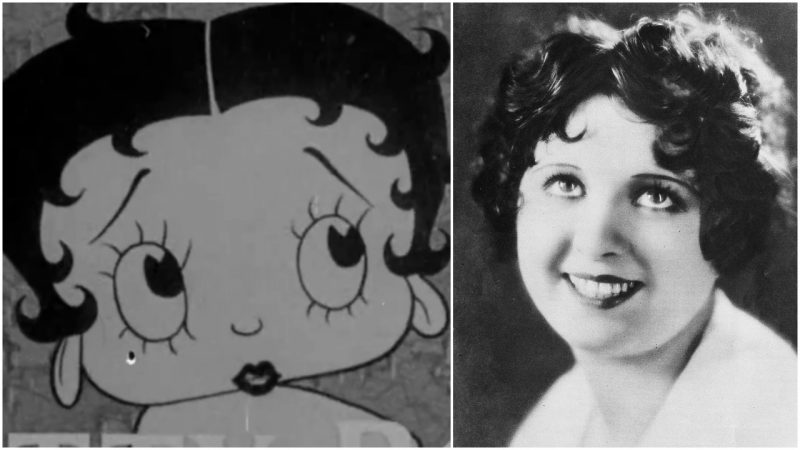With her big eyes, spit curls, high heels, and high-pitched voice, the animated Betty Boop was an instant hit when she first appeared on screen in 1930. She became an enduring icon of the Depression era. But the woman who inspired the coquettish cartoon never received a dime.
Helen Clare Schroeder was born in the Bronx in 1904. By her late teens, she was performing in vaudeville as an actress, dancer, and singer. Her 1927 turn in the musical A Night in Spain landed her a solo show at the Paramount Theater on 44th Street.
At her debut, Kane spiced up the lyrics of “That’s My Weakness Now” with an improvised scat that became famous: boop-boop-a-doop. Shortly thereafter she appeared in Oscar Hammerstein’s 1928 show Good Boy, in which she sang her most memorable and biggest hit in her coquettish voice, “I Wanna Be Loved By You.” The song reached number 2 on Billboard’s Pop charts.
Kane’s distinctive style, combining squeaky speech and jazzy singing, was considered modern and vaguely daring at the time. At her peak, she earned as much as $8,000 per week recording songs and musical films.
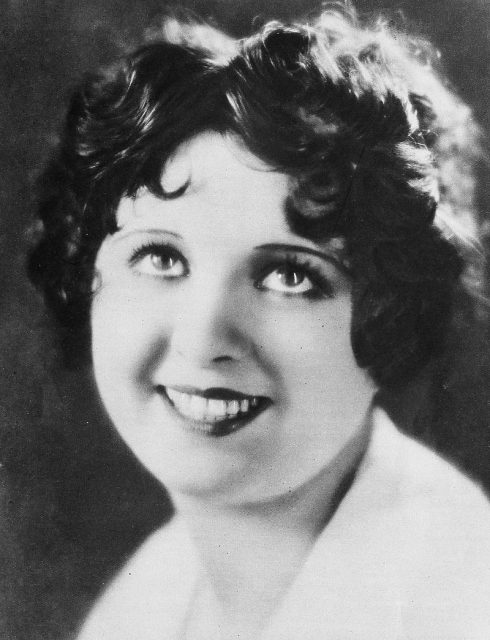
The character that became Betty Boop evolved in the early 1930s, when Max Fleischer Studios released a cartoon called Dizzy Dishes, the seventh in a series called Talkartoon. Animator Grim Natwick created a poodle with Kane’s kohl-rimmed big eyes and black spit curls who sang “boop-boop-a-doop.” In subsequent cartoons, the poodle was transformed into a human with hoop earrings and given the name Betty Boop. Soon she was given her own series and called“The Queen of the Animated Screen.” She was the Fleischer Studio’s most popular character ever.
Betty Boop quickly became a cultural icon, a symbol of the exuberant sense of freedom of the bygone Roaring Twenties. With her short skirt, strapless cleavage-revealing bodice, shapely legs, and high heels, she was one of the first animated sex symbols; her cartoons contained sly if slightly surreal sexual innuendos.
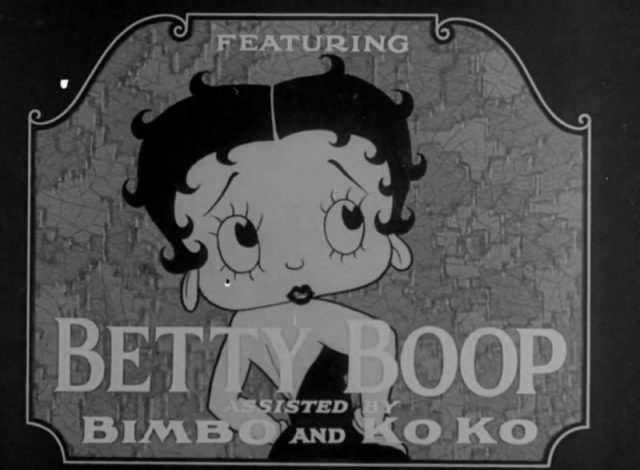
Oftentimes, her virtue seemed threatened with compromise. In one cartoon, Betty Boop is a high-wire artist in a circus who is harassed by the ringmaster. She sings,“Don’t take my boop-boop-da-doop away,” and is rescued by Koko the clown. In fact, she was so sexy and outspoken, she had to be toned down with the enactment of the Hays Code, when film censors said her winks and wiggling hips were “suggestive of immorality.”
Betty Boop’s voice was performed by several actresses, none of them Kane. The most enduring performer was Mae Questel, who voiced the cartoon for nearly a decade and who revised the role 50 years later in Who Framed Roger Rabbit.
Meanwhile, Helen Kane, who’d not been contacted about the character, much less remunerated, sued the Max Fleischer studio in 1932 for $250,000 for “deliberate caricature” and “unfair competition.” The case dragged on for two years before a judge ruled against her on the grounds that she her look was not unique and that she had not invented “booping” but had herself appropriated the style from another singer, Baby Esther.
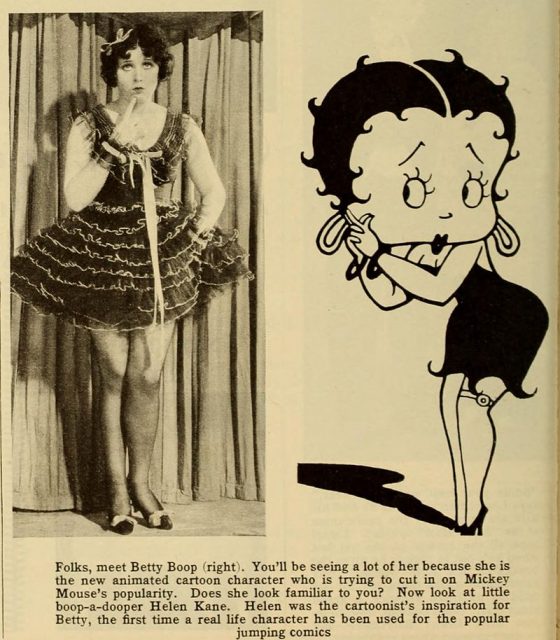
(Another singer, Clara Bow, is often cited as the inspiration for Betty Boop, but before his death Grim Nastwick himself admitted he’d used a photo of Kane to sketch the character.)
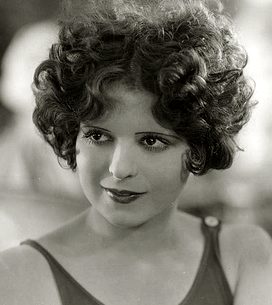
Sadly for both, Betty Boop’s and Helen Kane’s popularity faded at the end of the decade. The toned-down, tame Betty Boop, now aimed at children, was eclipsed by other animated stars. Helen Kane’s distinctive voice fell out of favor.
Kane appeared in bit parts on TV in the 1950s and 1960s. She died in 1966 of breast cancer, which she’d battled for a decade. She was 62.
A new Betty Boop animated series aimed at teenagers is currently in the works, according to Deadline, with a yet-to-be-announced release date in 2018.
